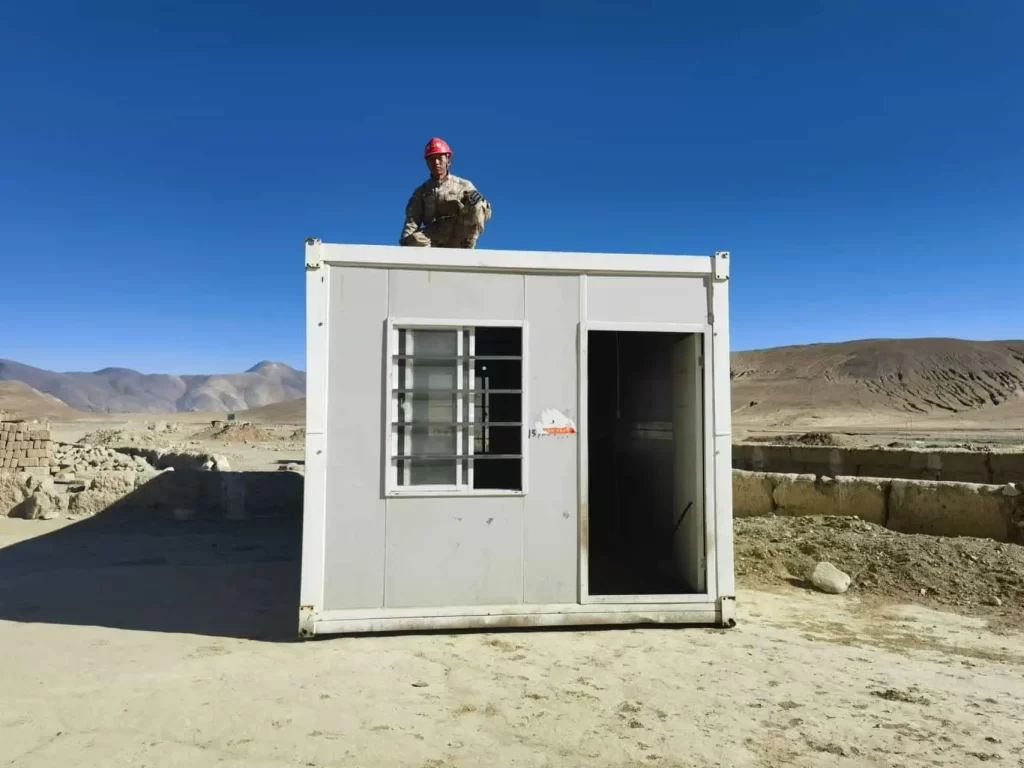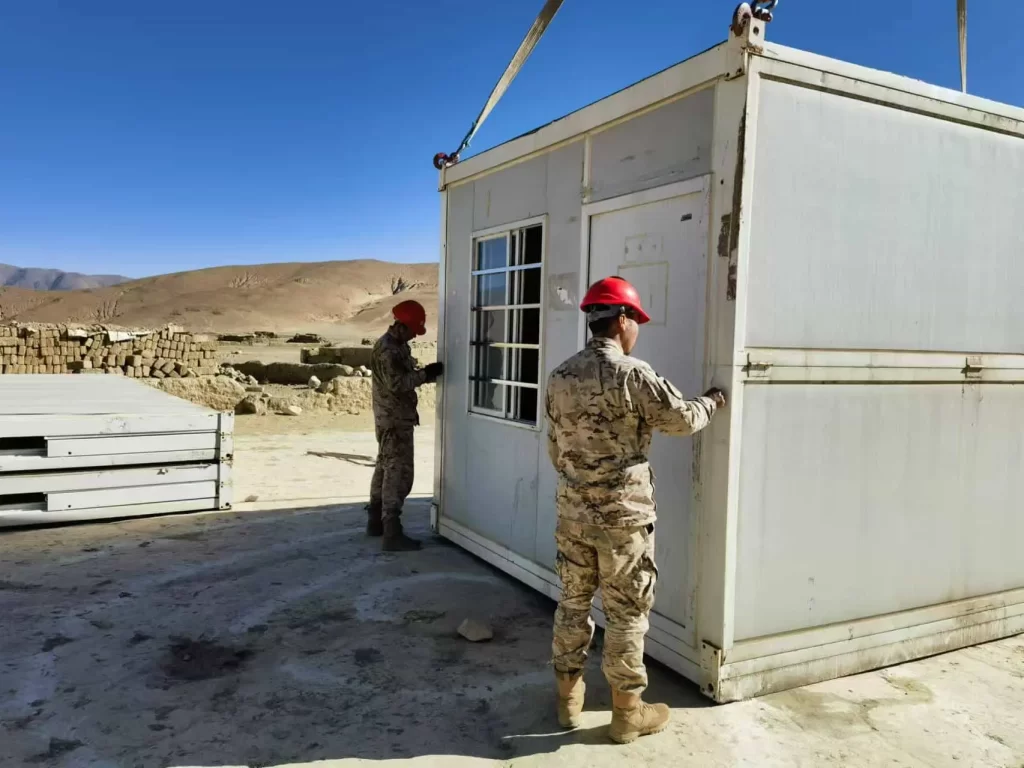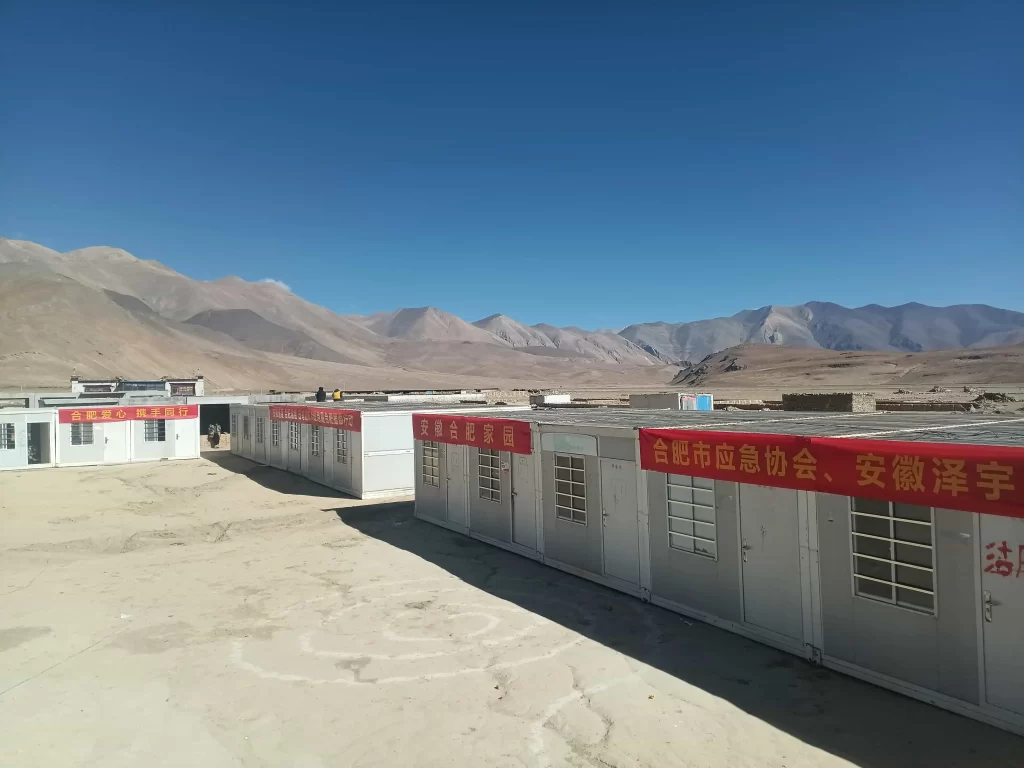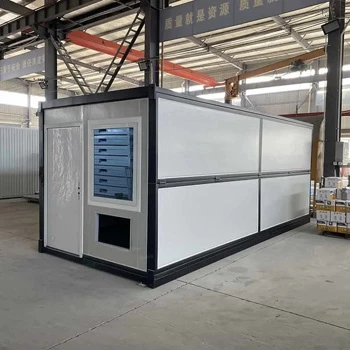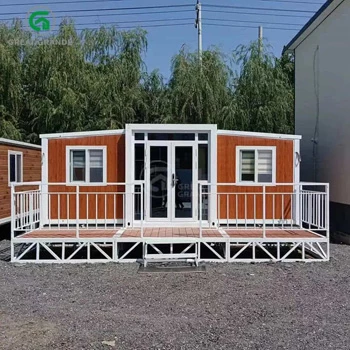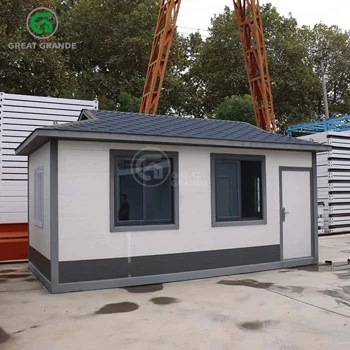Natural disasters come in many forms, from earthquakes to floods, typhoons to forest fires. Post-disaster reconstruction is not only about restoring physical buildings but also about the social and economic rebirth of affected communities. In particular, for residential reconstruction (i.e., rebuilding homes after a disaster), how to quickly, efficiently, and economically provide temporary and permanent housing solutions becomes the primary concern. In this context, faltbare Containerhäuser, with their numerous advantages, have emerged as the ideal choice for post-disaster reconstruction.
1. Rapid Installation, Quick Provision of Living Spaces
One of the biggest advantages of foldable container homes is their rapid installation feature. Traditional house construction often requires substantial time, manpower, and materials, whereas in post-disaster reconstruction, time is often the most valuable resource. Foldable container homes are pre-manufactured and assembled in factories, and once transported to disaster-stricken areas, they can be quickly deployed and put into use. This efficient construction method means that disaster victims can receive safe and comfortable housing in the shortest time possible, alleviating the inconvenience of post-disaster living.
For example, in 2017, the Caribbean region faced severe hurricane damage. Many homes were destroyed, and reconstruction efforts relied on traditional materials like wood and cement. However, due to time constraints and shortages of resources, foldable container homes provided a rapid solution as temporary shelters. Disaster victims were able to secure livable spaces quickly, while governments and aid organizations were able to begin long-term reconstruction work without delay.
2. Strong Adaptability, Flexible and Versatile
Foldable container homes are highly adaptable. They can be reconfigured and adjusted as needed to meet the varying needs of different families or communities. In post-disaster reconstruction, the environmental conditions and extent of damage vary greatly across regions, and container homes can flexibly respond to these changes. Containers can be used individually or combined to create multi-room, multifunctional residences.
For example, after the 2015 Nepal earthquake, many homes were leveled to the ground. Zusammenklappbare Containerhäuser were widely used in the construction of temporary shelters. These containers not only provided basic housing functions but could also be equipped with kitchens, bathrooms, and other facilities based on the needs of families, ensuring that victims had access to essential living amenities during the rebuilding period.
3. Environmental Friendliness and Sustainability
Another major advantage of foldable container homes in post-disaster reconstruction is their environmental sustainability. Traditional construction often requires large amounts of cement, steel, and other materials, the production of which places a significant burden on the environment. Container homes use repurposed shipping containers, which helps reduce waste production. Additionally, their materials can be recycled and reused, reducing resource wastage.
For instance, after the 2010 Haiti earthquake, many aid organizations chose container homes as temporary housing. Not only did these homes effectively solve the post-disaster housing problem, but they also reduced dependence on natural resources and environmental pollution.
4. Low Cost, Economically Feasible
Post-disaster reconstruction funds are typically limited, making it crucial to provide sufficient housing within a tight budget. Compared to traditional brick-and-mortar structures, the construction cost of foldable container homes is much lower. Containers are standardized products produced in bulk, making their procurement cost relatively low. Furthermore, they are easy to transport and require less special craftsmanship, significantly reducing overall construction expenses.
In the wake of the 2020 Australian bushfires, many homes were destroyed. To lower reconstruction costs, both the government and aid organizations widely adopted container homes. These homes not only provided quick shelter but also helped control the budget, alleviating the financial burden on both the government and citizens.
5. Durability, Resilience to Extreme Weather
Foldable container homes, made from steel structures, are highly durable and resistant to extreme weather conditions. This is particularly important for post-disaster reconstruction, as the weather and geological conditions in disaster-stricken areas are often harsh. The structure of container homes can effectively withstand storms, earthquakes, and other natural disasters, providing stable housing security.
For example, after Hurricane Dorian hit the Bahamas in 2019, many traditional buildings were destroyed. However, container homes, thanks to their steel structure and sealability, demonstrated superior resilience during the storm. Many disaster victims found safe refuge in these homes, avoiding further harm from secondary disasters.
Abschluss
With their rapid assembly, flexibility, environmental sustainability, low cost, and durability, faltbare Containerhäuser have proven to be the best choice for post-disaster residential reconstruction. Whether used for temporary housing after a sudden disaster or for permanent residences in long-term rebuilding efforts, they have shown immense potential. As the global demand for post-disaster reconstruction continues to grow, the application of container homes is promising, offering efficient, convenient, and sustainable rebuilding solutions for disaster-affected areas.
